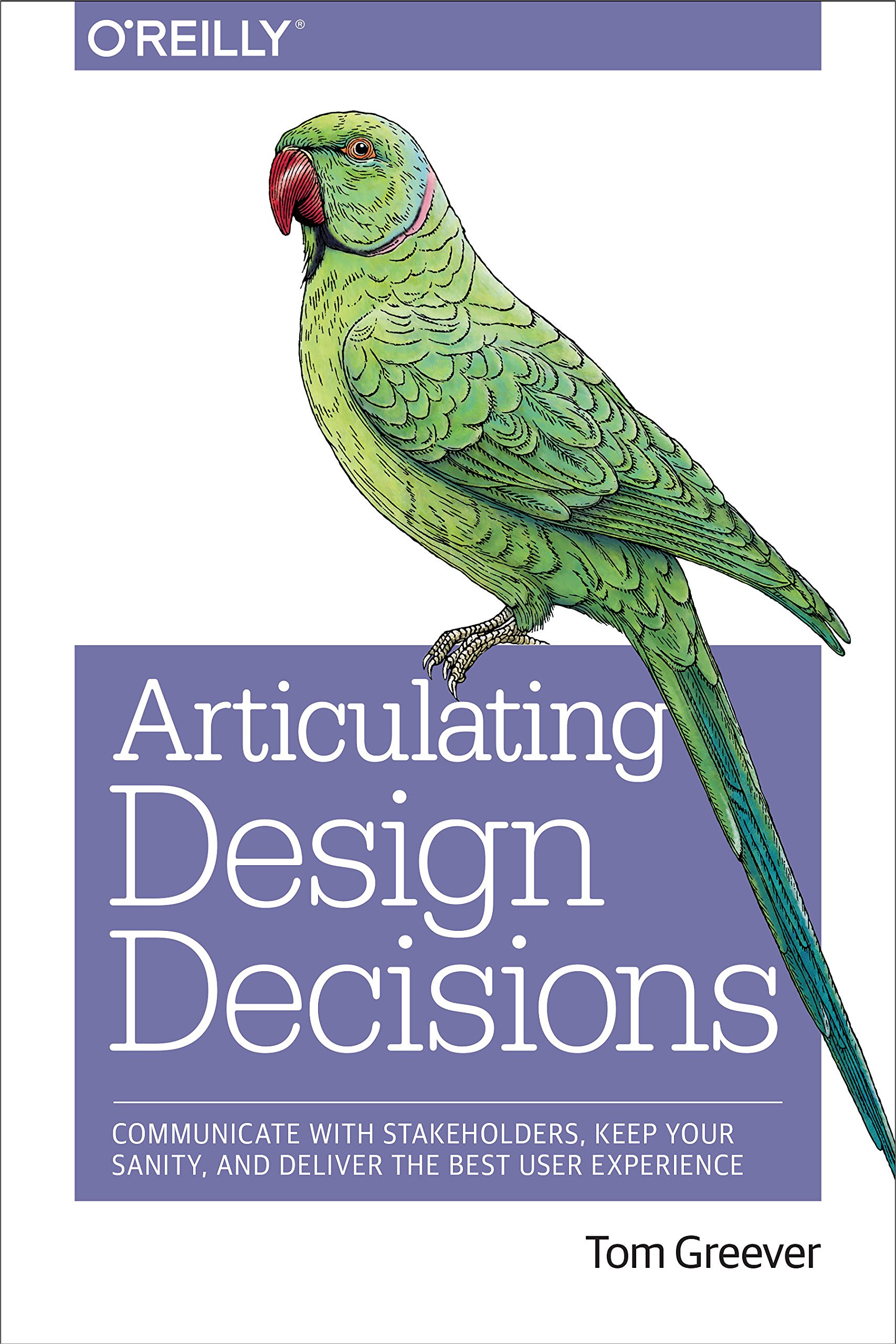I recently finished Articulating Design Decisions: Communicate with Stakeholders, Keep Your Sanity, and Deliver the Best User Experiences by Tom Greever, and have to say it is one of the most useful design books now on my shelf. Regardless of what type of designer you are, this book is highly relevant, well-written and includes a ton of great insights for helping you make your case, and follow a sound strategy that anyone on your team can understand and adapt to.
Here are some of my favorite quotes and takeaways from the book.
Empowering Design
Position your designers high enough in your business hierarchy to make and influence product decisions. Your app must connect with your audience on an emotional and contextual level to foster any notion of engagement. In a nutshell, your app, website, social media channel content are your brand, and designers iterative and abstract problem solving and insight, are as if not more valuable than the pleasing photoshop graphics they can make.
"Your ability to properly set, justify, and communicate expectations is more important then your ability to crank out killer designs on a daily basis."
Meetings
Meetings can easily become a circus of distraction and inaction without an effective design leader knows who knows how to properly set the stage for a productive, accountable dialogue regarding design decisions.
Use shared, living documents for your meeting notes (GoogleDrive). Every design meeting you hold should have an agenda plotted in the meeting notes ahead of time with attendee names, prioritized discussion items, and a section for follow-up tasks. Respecting everyone's perspective and insight is as great a skill as knowing when to speak. Always send a recap of each meeting within an hour and provide all attendees opportunity to comment.
“The single biggest problem in communication is the illusion that it has taken place”
“Lock in agreement. Put them in a position of needing to respond to you and keep the project moving forward."
“Before we move on, are we all in agreement?"
Ego
Designers need to understand self-awareness in order to more objectively see where their ego, personal taste, and and self-fulfilling biasses end and objective design work begins.
“The reasons why something went wrong is not nearly as important as fixing the problem.”
“When your ego is getting in the way that value is lost…Anytime you think that you're right and they are wrong you should be cautious.”
“By removing your ego, you create the space you need to form a response that will be based in reality and logic instead of opinion and stereotypes."
“Give up control of the outcome so that we can allow other people to provide feedback on the project."
“No matter how great you think your designs are, if the problem still exists, you are wrong.”
Stakeholder TIPS
“We have to approach our stakeholders with the same care that we would our loved ones."
“Propose something, even if it's wrong. Hopefully, that will give you the space you need to continue the dialogue without feeling like everything's going to be ruined unless you solve it now."
“Build in some space for you to regroup and consider the best approach, even when you agree with what's being proposed."
Design Iteration
A clickable prototype maybe faster to create than explaining it with documentation and diagrams.
“Any solution you propose – even when it's not ideal – will create a conversation that demonstrates there are more ways to address this problem."
“Remember that data tells you what the user did but not why."
“Remove the word “like” from your vocabulary. Ask questions to uncover thought process so because your feedback on designs not the designer review work in advance and have a list of questions or concerns ready for the designer."
If any of this interests you, grab a copy of this book. It makes a great case and is extremely well articulated and applicable.

